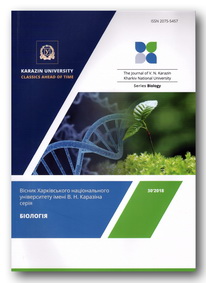Prognostic value of markers in associative genetics
Abstract
The article presents an algorithm for genetic-statistical analysis of a rare chronic disease with a hereditary predisposition. The results of genotyping obtained by one of the authors by the method of associative genetics were used. Multiple sclerosis is a disease with a hereditary predisposition. At present, the association of multiple sclerosis and a large number of genes has already been discovered, but the genetic control is not completely clear. An important step in combating the disease can be preventive measures among groups of people with hereditary predisposition. In this article, using the example of the C677T genetic polymorphism of the MTHFR gene, we show how to determine the effectiveness of identifying individuals at increased risk. Multiple sclerotic patients (n=180) and healthy (n=231) residents of southern Iran were examined by one of the authors previously. Based on these data, population-genetic indicators and statistical characteristics of the test were calculated. The distribution of genotypes in healthy people: CC – 65 %, CT – 29 %, TT – 6 %, in patients with multiple sclerosis CC – 35 %, CT – 46 %, TT – 19 %. The major allele in the population of southern Iran is C (pC = 0.797; qT = 0.203). The frequency of the minor T allele is doubled in the group of patients compared with healthy ones (qT = 0.419). The T allele is considered to be provocative; the allele C is protective. The CC genotype reduces the likelihood of multiple sclerosis by almost half compared with the empirical risk. In heterozygotes of CT, the risk is increased by more than one and half times, in homozygotes of TT more than three times. 95 % CI confidence intervals for the OR odds ratio indicator are: CC (0.19–0.44), CT (1.36–3.10), TT (1.99–7.61), CT + TT (2.29–5.21). The statistical characteristics of the test indicate its low power when used in screening programs. The sensitivity when testing carriers of the T allele (CT + TT genotypes) is 65 %. The very low prognostic value of a positive test makes it inappropriate to use for screening, but this test may be useful in individual genetic counselling for patients with multiple sclerosis, as well as their relatives. The analysis scheme can be used in other studies of traits with a genetic component.
Downloads
References
Alatab S., Hossein-nezhad A., Mirzaei K. et al. (2011). Inflammatory profile, age of onset, and the MTHFR polymorphism in patients with multiple sclerosis. J. Mol. Neurosci., 44(1), 6–11. https://doi.org/10.1007/s12031-010-9486-y
Armitage P., Berry G. (1994). Statistical methods in medical research. Blackwell Scientific Publications, Oxford, 620 p.
Atramentova L.A. (2015). Design and statistics of biological research. Kharkiv: NTMT, 269 p. (in Russian)
De Marco P., Calevo M.G., Moroni A. et al. (2002). Study of MTHFR and MS polymorphisms as risk factors for NTD in the Italian population. J. Hum. Genet., 47(6), 319–324. https://doi.org/10.1007/s100380200043
Fekih Mrissa N., Mrad M., Klai S. et al. (2013). Association of methylenetetrahydrofolate reductase A1298C polymorphism but not of C677T with multiple sclerosis in Tunisian patients. Clin. Neurol. Neurosurg., 115(9), 1657–1660. https://doi.org/10.1016/j.clineuro.2013.02.025
Izadi S., Nikseresht A.R., Poursadeghfard M. et al. (2015). Prevalence and incidence of multiple sclerosis in Fars Province, Southern Iran. Iran J. Med. Sci., 40(5), 390–395.
Jonasdottir A., Thorlacius T., Fossdal R. et al. (2003). A whole genome association study in Icelandic multiple sclerosis patients with 4804 markers. J. Neuroimmunol., 143(1–2), 88–92. https://doi.org/10.1016/j.jneuroim.2003.08.018
Klotz L., Farkas M., Bian N. et al. (2010). The variant methylenetetrahydrofolate reductase c.1298A>A(p.E429A) is associated with multiple sclerosis in German case-control study. Neuroscience Lett., 468, 183–185. https://doi.org/10.1016/j.neulet.2009.10.057
Levin L.I., Munger K.L., Ruberstone M.V. et al. (2005). Temporal relationship between elevation of Epstein–Barr virus antibody titers and initial onset of neurological symptoms in multiple sclerosis. JAMA, 293(20). – P. 2496–2500. https://doi.org/10.1001/jama.293.20.2496
Naghibalhossaini F., Ehyakonandeh H., Nikseresht A., Kamali E. (2015). Association between MTHFR genetic variants and multiple sclerosis in a Southern Iranian Population. Int. J. Mol. Cell Med., 4(2), 87–93.
Authors retain copyright of their work and grant the journal the right of its first publication under the terms of the Creative Commons Attribution License 4.0 International (CC BY 4.0), that allows others to share the work with an acknowledgement of the work's authorship.




